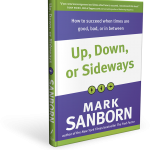LinkedIn, the popular social-networking site, went public May 19 with shares for its initial public offering priced at $45 each. That put the company’s value at around $4.3 billion. Before noon on the day of the IPO, the stock price had climbed as high as $92.99 a share.
So what’s a share of LinkedIn really worth?
Whatever someone’s willing to pay for it.
LinkedIn spent about eight years building its value as a company, then tested that value when it went public. Like all companies, how well it holds its value over time remains to be seen. But as individuals trying to define and achieve success, the best place to start is like a company working toward a successful IPO — by building our value.
If your core values are rock solid, if you produce outcomes that other people value, and if you value other people, then you’ll find yourself positioned to prosper regardless of the circumstances around you.
For instance, if you are always involved in important projects within your organization, you’re providing value that can’t be ignored. When times are good, you’ll see the rewards (probably in higher pay and/or fast-track promotions). When times are bad and your organization or your customers are cutting back, you’ll find yourself on the “can’t cut” list. The opposite? You’ll be like those “nonessential government workers” you read about when Congress can’t settle on a budget — the first to get laid off.
Have you checked with your employer lately to see what he or she values in your work? Have you asked that person how you might increase your value to the organization? You ask the same questions of clients and customers.
None of us are irreplaceable, but all of us can produce value that sets us up for success.
This blog is based on content in my latest book, Up, Down, Or Sideways. It is available wherever you buy great books. Click here to learn more about the book or for ordering information.







